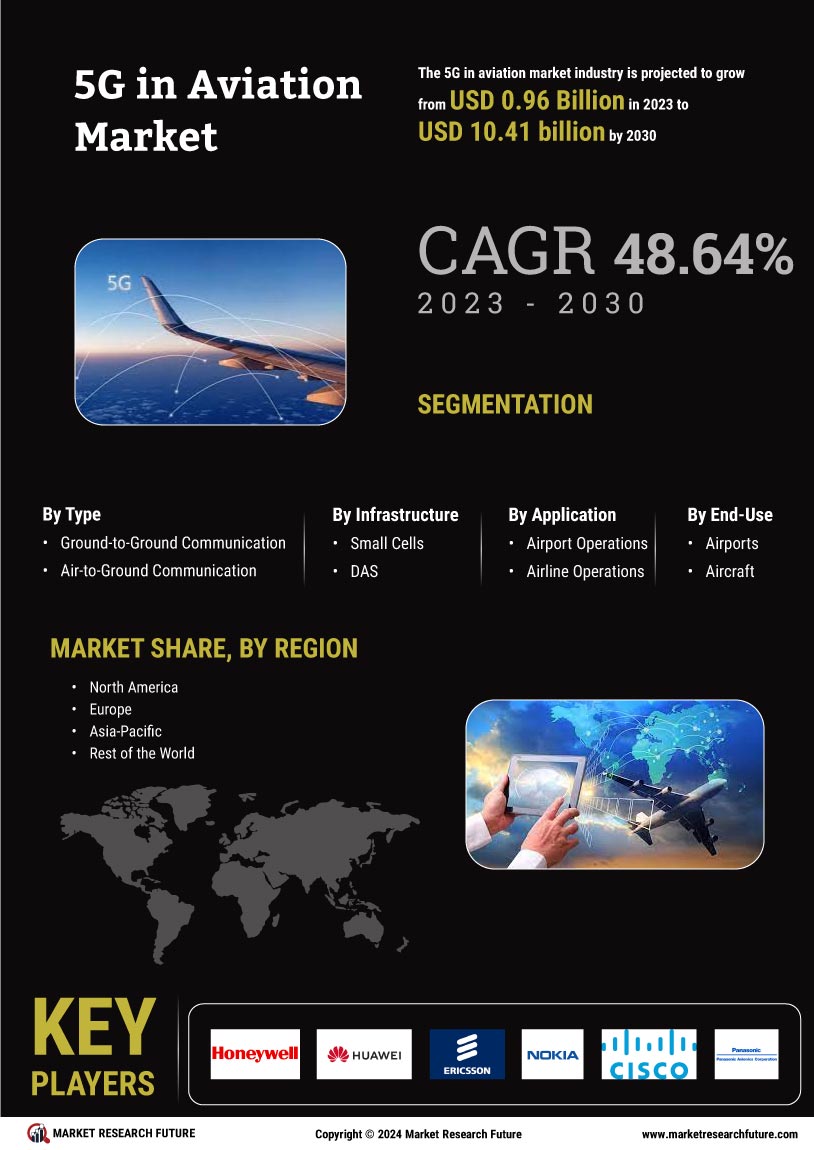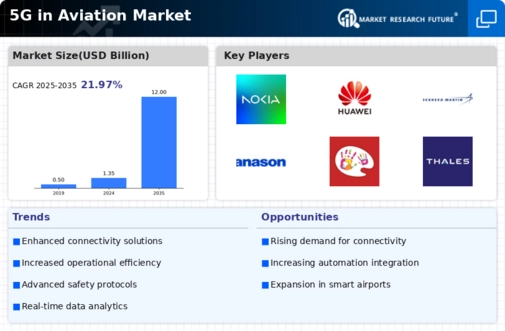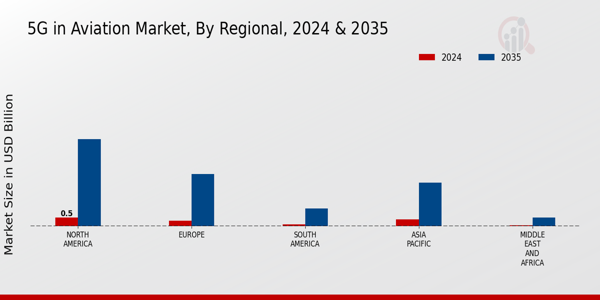Enhanced Connectivity
The Global 5G in Aviation Industry is driven by the demand for enhanced connectivity among aircraft, ground services, and passengers. With 5G technology, airlines can provide high-speed internet access, enabling real-time communication and data transfer. This connectivity facilitates improved operational efficiency, such as better flight tracking and maintenance scheduling. As of 2024, the market is valued at approximately 1.35 USD Billion, reflecting the growing investment in 5G infrastructure. Airlines are increasingly adopting these technologies to enhance customer experience and streamline operations, indicating a strong trajectory for growth in the coming years.
Operational Efficiency
Operational efficiency emerges as a critical driver within the Global 5G in Aviation Industry. The integration of 5G technology allows for the automation of various processes, including baggage handling and aircraft maintenance. This automation is expected to reduce delays and enhance the overall passenger experience. Moreover, real-time data analytics enabled by 5G can lead to more informed decision-making, optimizing flight schedules and resource allocation. As the market evolves, it is projected to reach 12 USD Billion by 2035, underscoring the potential for significant improvements in operational efficiency through advanced connectivity.
Market Growth Projections
The Global 5G in Aviation Industry is poised for substantial growth, with projections indicating a market value of 1.35 USD Billion in 2024 and an anticipated increase to 12 USD Billion by 2035. This growth trajectory reflects the increasing adoption of 5G technology across various aviation sectors, including airlines, airports, and air traffic management. The compound annual growth rate (CAGR) of 21.97% from 2025 to 2035 suggests a robust expansion driven by technological advancements and the need for enhanced connectivity. As stakeholders recognize the potential benefits of 5G, investments in infrastructure and innovation are likely to accelerate, further propelling market growth.
Passenger Experience Improvement
The improvement of passenger experience is a vital driver in the Global 5G in Aviation Industry. With the advent of 5G, airlines can offer seamless in-flight entertainment and connectivity services, which are increasingly becoming essential for travelers. Enhanced bandwidth allows for streaming services and real-time updates, catering to the growing expectations of tech-savvy passengers. This focus on customer satisfaction is likely to contribute to the market's growth, as airlines seek to differentiate themselves in a competitive landscape. The anticipated growth trajectory suggests that by 2035, the market could reach 12 USD Billion, driven by these enhancements.
Safety and Security Enhancements
Safety and security enhancements represent a pivotal driver in the Global 5G in Aviation Industry. The implementation of 5G technology allows for advanced surveillance systems and real-time monitoring of aircraft systems, which can significantly mitigate risks. Enhanced communication capabilities enable quicker responses to emergencies and better coordination among ground and air personnel. As safety remains a paramount concern in aviation, the adoption of 5G solutions is likely to increase. This trend aligns with the projected CAGR of 21.97% for the period from 2025 to 2035, indicating a robust commitment to safety improvements through technological advancements.
Regulatory Support and Standards Development
Regulatory support and standards development play a crucial role in shaping the Global 5G in Aviation Industry. Governments and aviation authorities are actively working to establish guidelines and frameworks that facilitate the safe integration of 5G technology into aviation operations. This regulatory backing is essential for fostering innovation and ensuring that safety standards are met. As the industry evolves, collaboration between stakeholders will likely lead to the establishment of best practices and standards that enhance the adoption of 5G solutions. This supportive environment is expected to contribute to the market's growth, aligning with the projected CAGR of 21.97% from 2025 to 2035.























Leave a Comment